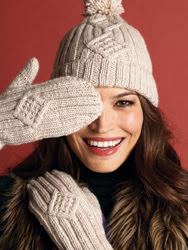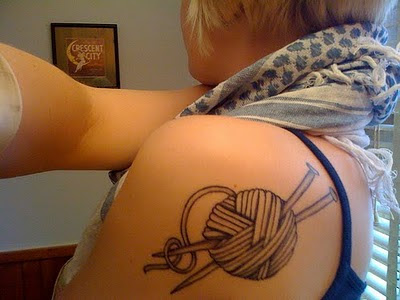
I'm so upset tonight by what I've been reading about today's shooting at a public school in Newtown, Connecticut, by the horror of all those deaths, by my own dully resigned sense that even something horrific as this will not get the States to change the way it treats the mentally ill, regulates gun ownership, or reports on and addresses problems in the media, that I decided I wanted to do a "good news" post about how violence can be addressed. And since this is a knitting blog, of course this meant I had to find material on how knitting could be used to decrease violence. You may be surprised to read that I didn't have to look far. I googled "knitting violence", and the topic for this post popped right up.
Two retired women, Lyn Zwerling and Sheila Rovelstad, have initiated and implemented a program called Knitting Behind Bars at a prison in Maryland. They approached every prison in the area with their idea for a knitting class, and all the prisons refused except the last one, where the prison authorities skeptically agreed to let them try it.
And the program has been a success. As the Baltimore Sun wrote in a November 2011 article,
Men literally beg to get in. There's a waiting list.... They want it so much, in fact, that they're willing to be good in order to do it. [Prison warden Margaret] Chippendale has noticed lower rates of violence among the men who knit. "It's a privilege to be in that program," Chippendale says. "It's something that matters and they don't want to do anything to be removed from it."
One prisoner, who was serving time for stabbing someone and who was busily knitting a hat, told a reporter, "My mind is on something soft and gentle. My mind is nowhere near inside these walls."
Zwerling talks about why she thinks knitting classes are beneficial in an NPR interview described here. She believes that knitting teaches patience, discipline, anger management, and goal orientation, all important life skills that many criminals may be lacking. And some lessons in basic social skills can be shoehorned in at the same time. Zwerling and Rovelstad insist on good behaviour from the men in their knitting classes: no swearing or rough housing, and given names are to be used rather than prison nicknames.
The men in these knitting classes have made little dolls that first responders in Maryland now carry to give to children at scenes of accidents, fires and other tragedies. They've made hats and scarves for their own children, for their mothers or grandmothers, for themselves. And at least some of them have said they are continuing to knit upon their release from prison, or intend to.

Are knitting classes some magical solution for violence in prisons and the heartbreakingly high recidivism rates among released prisoners? Of course not. Real change, especially change at the extent and scale of change that is needed in the prison system and among convicted criminals, is gradual and requires a holistic approach. It will take more than Thursday-night knitting classes to rehabilitate those who have been unable or unwilling to earn a living without resorting to crime, or to help those who can't relate to others without violence. But it's an idea that has been tried and is showing a demonstrable level of success. These knitting classes have given some of the criminals in one prison useful skills, some peace of mind and innocent enjoyment, a sense of pride and competence, and a way to give to others.
Knitting Behind Bars has its own blog where you can read about the program and, since Zwerling and Rovelstad supply all the yarn, needles, and other tools and supplies needed for their classes, you can make a monetary donation to their program if you wish. Unfortunately, because of lack of storage and other logistical issues, Zwerling and Rovelstad are unable to accept donations of yarn, so if you were hoping to unload your stash, you'll have to find another charity to ship it to.








































